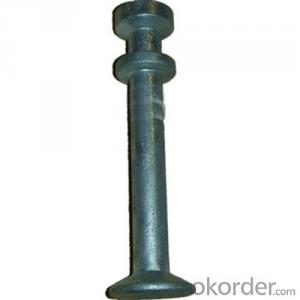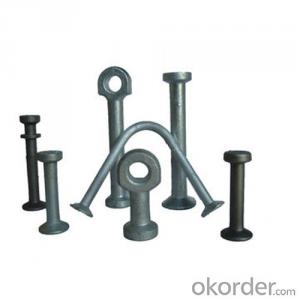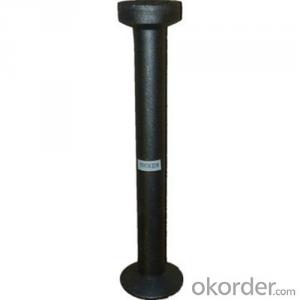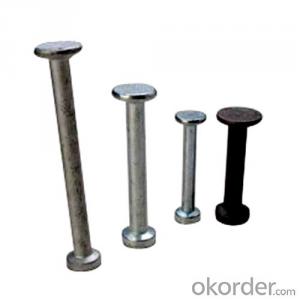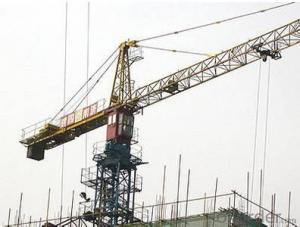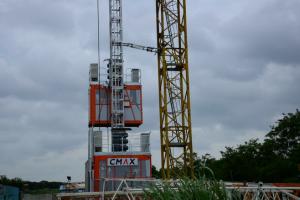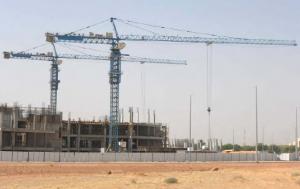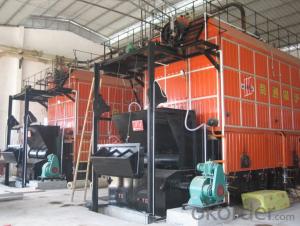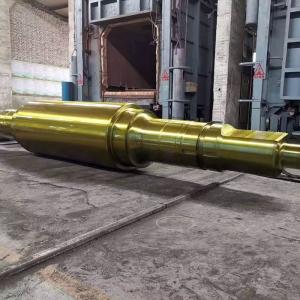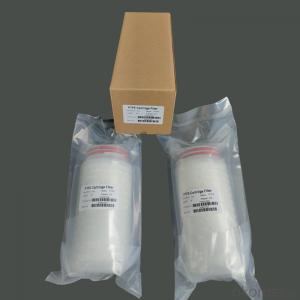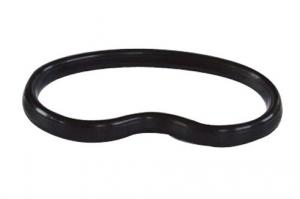Lifting Anchor Forged Straight Type Long Design III
- Loading Port:
- Tianjin
- Payment Terms:
- TT OR LC
- Min Order Qty:
- 100 pc
- Supply Capability:
- 10000 pc/month
OKorder Service Pledge
OKorder Financial Service
You Might Also Like
1. Specification:
Material: Carbon Steel, Forged
Finish: Self Colored, or Galvanized
Packaging: carton, then on pallets, or as customers' requirements
Stocks: we have stocks for regular sizes
Warning: never exceed working load limit
2. Products available:
Swift lift lifting eyes are used with the swift lift anchors to lift, handle and place precast concrete elements
3. Primary competitive advantages:
1. More than 10 years 4 years focus on building material manufacturing
Prompt delivery lead time within 25 days after confirming order
2. Eathu's products are enhanced by the factory QA and quality control checks during the production, if necessary each order can be send out with a certificate referring back to test
3. OEM/ODM capability: more then 10 years experience
Small Orders Accepted
Brand-name Parts
Country of Origin
Distributorships Offered
Electronic Link
Experienced Staff
Form A
Green Product
Guarantee/Warranty
International Approvals
4.Packaging and delivery:
Packaging details: goods packed in cartons and then on the pallet
Delivery detail: within 25 days after getting payment
Small Orders Accepted
Brand-name Parts
Country of Origin
Green Product
Guarantee/Warranty
International Approvals
Market:
Central/South America
Eastern Europe
Mid East/Africa
North America
FAQ:
Q1: How long about delivery time Concrete Lifting anchors ?
A1: The delivery time will be very short, normally we keep the raw materials for old customers and sometime we also keep stock products to
make sure delivery time in any emergency cases.
Q2: How do we guarantee the quality of our Concrete lifting anchors?
A2: We have established an advanced quality management system which conducts strict quality tests at every step, from raw materials to the final product. At the same time, we provide extensive follow-up service assurances as required.
Q3: How soon can we receive the product after purchase?
A3: Within three days of placing an order, we will book the vessel for goods. The specific shipping date is dependent upon international and government factors, but is typically 7 to 30 workdays.
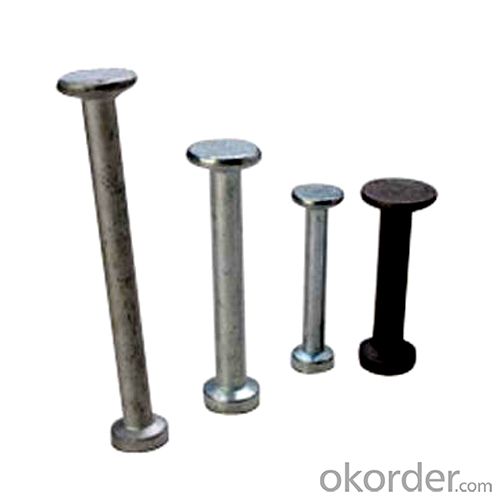
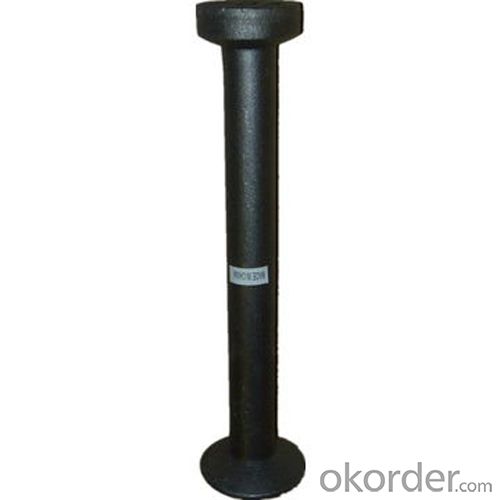
- Q:Can concrete pump spare parts be ordered in bulk quantities for future use?
- Yes, concrete pump spare parts can be ordered in bulk quantities for future use. This can be beneficial to ensure a continuous supply of spare parts, reduce downtime, and potentially negotiate better pricing and discounts.
- Q:Are there any specific guidelines for the installation of control valves or solenoids in concrete pump spare parts?
- Concrete pump spare parts have specific guidelines for the installation of control valves or solenoids. Consider the following general guidelines: 1. Compatibility: Ensure that the control valves or solenoids being installed are compatible with the concrete pump spare parts. Refer to the manufacturer's specifications and guidelines to determine the appropriate model and size. 2. Proper Positioning: Install the control valves or solenoids in a position that allows for easy access and maintenance. They should be easily visible and reachable for adjustments or repairs. 3. Mounting: Securely mount the control valves or solenoids to prevent any vibrations or movements during operation. This will ensure the stability and durability of the components. 4. Electrical Connections: Follow the manufacturer's instructions for electrical wiring. Connect the control valves or solenoids to the correct power source and ensure proper grounding to avoid electrical hazards. 5. Sealing: Use suitable sealing materials, such as gaskets or O-rings, to create a tight and leak-free connection between the control valves or solenoids and other components. This will prevent any fluid or air leakage. 6. Testing: After installation, it is crucial to thoroughly test the functionality of the control valves or solenoids. Check for leaks, proper operation, and responsiveness to control signals. Address and resolve any issues before operating the concrete pump. Remember that these guidelines are general, and specific manufacturer recommendations and the design of the concrete pump spare parts may vary. Always refer to the manufacturer's guidelines and instructions for the specific control valves or solenoids being used.
- Q:Can concrete pump spare parts be customized for specific pump models?
- Yes, concrete pump spare parts can be customized for specific pump models. Concrete pumps come in various sizes and designs, and each model may have unique specifications and requirements for its spare parts. To ensure compatibility and optimal performance, it is important to customize the spare parts according to the specific pump model. This customization can include dimensions, materials, and other technical specifications that are tailored to fit the particular pump model. By customizing the spare parts, it ensures a perfect fit and enhances the efficiency and longevity of the concrete pump. Additionally, customization allows for potential improvements or modifications to the original design, resulting in enhanced performance and durability of the pump. Therefore, it is crucial to work with reputable manufacturers or suppliers who can provide customized concrete pump spare parts for specific pump models.
- Q:What are the indications of an inaccurate concrete pump pressure gauge?
- There are multiple signs that may suggest an unreliable concrete pump pressure gauge. Below are a few examples: 1. Inconsistent measurements: If the pressure gauge consistently provides varying readings despite consistent concrete pumping conditions, it could indicate an inaccurate gauge. For instance, if the gauge shows a pressure of 1000 psi one moment and then suddenly jumps to 1500 psi without any significant changes in the pumping operation, it could suggest a problem with the gauge. 2. Abnormal readings: If the pressure gauge consistently displays excessively high or low pressure readings that deviate significantly from the expected values, it may imply an inaccurate gauge. It is crucial to be aware of the usual pressure range for the specific concrete pumping operation to identify abnormal readings. 3. Incompatibility with other gauges: If there are multiple pressure gauges installed in the concrete pumping system and they provide notably different readings, it may indicate that one or more of the gauges are inaccurate. By comparing the readings from various gauges, it is possible to determine if a particular gauge is faulty. 4. Insufficient pump performance: If the concrete pump is not performing as anticipated, such as experiencing reduced output or inconsistent flow rates, it may be a result of inaccurate pressure readings. Inaccurate pressure measurements can disrupt the control of the pump's hydraulic system, leading to inefficiencies in pumping operations. 5. Physical damage or wear: Any visible damage or signs of wear on the pressure gauge, such as cracked glass, bent needles, or loose connections, can compromise its accuracy. Such physical damage can result in inaccurate readings and should be promptly addressed. Regular calibration and maintenance of the pressure gauge are essential to ensure accurate readings. If any indications of an inaccurate gauge are observed, it is advisable to consult a professional technician or engineer to assess the situation and take appropriate actions to rectify the issue.
- Q:What is the importance of a concrete pump control valve?
- The operation of a concrete pump heavily relies on the presence of a control valve, which plays a vital role. This crucial component allows for the accurate and efficient management of concrete flow and pressure. To grasp the significance of a concrete pump control valve, one must consider its various functions. Firstly, it serves to regulate the movement of concrete from the hopper to the pumping cylinders. Through manipulation of this valve, operators can adjust the flow rate to meet the specific demands of the project. This ensures that the appropriate amount of concrete is pumped, preventing wastage and optimizing productivity. Secondly, the control valve facilitates precise control of pressure within the pumping cylinders. By making adjustments to the valve, operators can increase or decrease pressure levels, maintaining a consistent and steady concrete flow. This ability is crucial in preventing blockages or clogs within the concrete pump system, which can lead to costly downtime and repairs. Moreover, the control valve enables operators to switch between different pumping modes, such as high-pressure pumping or low-pressure spraying. This versatility allows for the efficient completion of a wide range of concrete pumping tasks, from pouring foundations to applying decorative concrete finishes. In addition to its functional significance, a concrete pump control valve also contributes to the safety of the pumping operation. It empowers operators to halt or reverse the flow of concrete swiftly in the event of emergencies or equipment malfunctions. This feature ensures that potential hazards are promptly addressed, minimizing the risk of accidents and injuries. Overall, the importance of a concrete pump control valve lies in its capacity to provide precise control over concrete flow and pressure during pumping operations. It guarantees efficiency, productivity, versatility, and safety, establishing it as an indispensable component of any concrete pumping system.
- Q:What is the function of a concrete pump remote control?
- The concrete pump remote control is a tool that enables the operation and control of a concrete pump from a distance. It grants the operator the ability to manipulate various aspects of the pump's functioning, including initiating and terminating the pumping process, adjusting the pump's speed and direction, and governing the placement and flow of the concrete. Through its capacity for remote control, it eliminates the necessity for the operator to be in close physical proximity to the pump, thereby enabling a safer and more efficient operation. Furthermore, the remote control frequently incorporates additional features, such as emergency stop buttons, diagnostics, and data logging capabilities, which further augment the functionality and dependability of the concrete pump. In summary, the concrete pump remote control serves to provide convenience, accuracy, and safety in the operation of concrete pumping equipment.
- Q:How often should hopper grate handles be inspected or replaced in a concrete pump?
- Regular inspections should be conducted on hopper grate handles in a concrete pump to identify any signs of wear and tear or damage. The frequency of these inspections and the need for replacement may vary depending on the equipment's usage and condition. It is suggested that the hopper grate handles be inspected at least once a month or after every 500 hours of operation, whichever occurs first. During the inspection, it is important to verify that the handles are firmly attached to the hopper grate and to examine them for any cracks, bends, or other structural problems. If any damage is detected, it is recommended to promptly replace the handles to prevent accidents or further harm to the equipment. It is also crucial to adhere to the manufacturer's guidelines and recommendations for the maintenance and replacement of hopper grate handles. By regularly inspecting and replacing the handles as necessary, the safe and efficient operation of the concrete pump can be ensured.
- Q:Can concrete pump spare parts be installed by the pump owner or operator, or is professional assistance required?
- Professional assistance is generally required for the installation of concrete pump spare parts. The complexity and technical nature of these parts, along with the potential safety risks involved, necessitate the expertise of trained professionals. Attempting to install the spare parts without proper knowledge and experience could lead to improper functioning of the pump and even accidents. It is always recommended to seek professional assistance to ensure the correct installation and safe operation of concrete pump spare parts.
- Q:How can a faulty agitator motor affect the concrete mixing process?
- The concrete mixing process can be significantly affected by a faulty agitator motor in several ways. To begin with, the rotation of the mixing drum, which is crucial for thoroughly blending all the ingredients in the concrete mix, is the responsibility of the agitator motor. If the motor is not functioning properly or is faulty, it can lead to inadequate mixing. This can cause inconsistencies in the concrete mixture, with certain portions being over-mixed while others are under-mixed. Consequently, the concrete may not achieve the desired level of strength, durability, or uniformity. Additionally, a faulty motor can cause irregular or insufficient agitation, resulting in the formation of lumps or clumps in the concrete mix. These lumps can have a negative impact on the quality of the final product as they can create weak spots or air pockets within the concrete. Moreover, the presence of lumps can compromise the overall workability of the mix, making it more challenging to handle and place. This, in turn, can affect the efficiency and productivity of the construction project. Moreover, an uneven distribution of materials within the mixing drum can occur due to a faulty agitator motor. This can cause variations in the proportions of aggregates, cement, water, and additives, all of which are crucial for achieving the desired properties of the concrete. Inconsistent material distribution can result in concrete with inadequate compressive strength, reduced durability, and increased susceptibility to cracking or other forms of damage. Lastly, a malfunctioning agitator motor can lead to increased mixing time as it may take longer to achieve the desired level of homogeneity in the concrete mix. This can have an impact on the overall productivity of the concrete mixing process, resulting in delays in construction schedules and increased costs. In summary, a faulty agitator motor can have a significant impact on the concrete mixing process. It can lead to inadequate mixing, the formation of lumps, uneven material distribution, and increased mixing time. All these factors can contribute to a decrease in the quality of the final concrete product, compromising its strength, durability, workability, and overall performance.
- Q:What is the purpose of a concrete pump cleaning ball?
- The purpose of a concrete pump cleaning ball is to clean out residual concrete and debris from the pumping system, ensuring proper functioning and preventing blockages or clogs.
1. Manufacturer Overview |
|
|---|---|
| Location | |
| Year Established | |
| Annual Output Value | |
| Main Markets | |
| Company Certifications | |
2. Manufacturer Certificates |
|
|---|---|
| a) Certification Name | |
| Range | |
| Reference | |
| Validity Period | |
3. Manufacturer Capability |
|
|---|---|
| a)Trade Capacity | |
| Nearest Port | |
| Export Percentage | |
| No.of Employees in Trade Department | |
| Language Spoken: | |
| b)Factory Information | |
| Factory Size: | |
| No. of Production Lines | |
| Contract Manufacturing | |
| Product Price Range | |
Send your message to us
Lifting Anchor Forged Straight Type Long Design III
- Loading Port:
- Tianjin
- Payment Terms:
- TT OR LC
- Min Order Qty:
- 100 pc
- Supply Capability:
- 10000 pc/month
OKorder Service Pledge
OKorder Financial Service
Similar products
New products
Hot products
Related keywords
